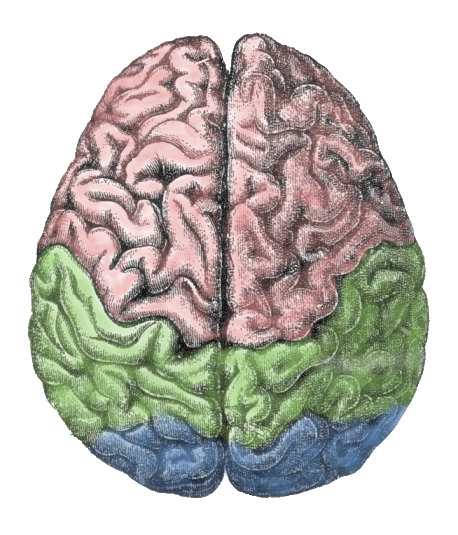The brain is a mysterious organ. It is responsible for all the functions of the body, processes pain, yet has no pain receptors of its own. It’s 73% water and produces enough energy to light a small LED bulb. An infant’s brain is constantly growing but is already about 80% of the size it will reach in adulthood. If you had a piece of your own brain the size of a grain of sand in your palm, it would contain over 100,000 neurons (the cell type that transmits information) and over 1 billion synapses (the junction between neurons). There is much we don’t know about the brain, but after decades of high-level research, we have learned a great deal.
The brain is split down the center into two hemispheres. The two halves are connected by five groupings of fibers, the largest and possibly most well known among these five is the corpus callosum (Latin for tough body). These connective tissues allow for communication between the two halves of the brain. It should be noted here, as this is a music blog after all, that the corpus callosum tends to be bigger in musicians and possibly affords greater communication between the hemispheres.
Okay…so, who cares besides neurologists, psychologists, and hat makers? WE ALL SHOULD! We all have a brain after all and many of us feel that’s where the essence of who we are dwells, at least the intellectual part of us.
As it turns out, thanks so scientific research, we know that the right hemisphere develops first (important development happens by ages three to four), and some pretty important things go on in that hemisphere. Dr. Allan Schore, a member of the clinical faculty of the Department of Psychiatry and Biobehavioral Sciences at the UCLA David Geffen School of Medicine, and at the UCLA Center for Culture, Brain, and Development, shares the following:
…the right brain…develops earlier than the left brain. The right brain is involved in the regulation of emotion and arousal states, and in the nonverbal processing of social and emotional information. The right brain is also involved in empathy and creativity…Now, the infant’s brain development literally depends on this social interaction, on right-brain to right-brain communication with its mother. Through these emotionally intimate interactions, the actual organization of the infant’s right brain moves from simple to more complex. And here’s where the link to physical health comes in. The emerging right brain is more connected to the body than the later developing left brain. So there are strong brain-mind-body connections, including into the immune system, and in this way, to physical health.

Play
“You can discover more about a person in an hour of play than in a year of conversation.” – Plato
One of the most important activities young children can take part in is play. Plato knew it thousands of years ago, Nothing’s changed. Play, both structured and unstructured, has an incredibly positive impact on social development. The right brain deals with intuition, imagination, and creativity. It is where we play – unless we are playing “complete your 1040 tax form. Then it’s probably safe to say you’re “playing” with the other side.
So why is play so important to development? Dr. Kenneth Ginsberg of the Children’s Hospital of Philadelphia explains:
Play allows children to use their creativity while developing their imagination, dexterity, and physical, cognitive, and emotional strength. Play is important to healthy brain development. It is through play that children at a very early age engage and interact in the world around them. Play allows children to create and explore a world they can master, conquering their fears while practicing adult roles, sometimes in conjunction with other children or adult caregivers. As they master their world, play helps children develop new competencies that lead to enhanced confidence and the resiliency they will need to face future challenges. Undirected play allows children to learn how to work in groups, to share, to negotiate, to resolve conflicts, and to learn self-advocacy skills. When play is allowed to be child driven, children practice decision-making skills, move at their own pace, discover their own areas of interest, and ultimately engage fully in the passions they wish to pursue.
Study after Study
After study after study after study confirms what Kindermusik educators know and see on a daily basis. When you couple music with play amazing things can happen. A recent study from our friends at the University of Queensland in Australia looked at information collected from over 3000 kiddos ages 2-3. Here’s what they found:
“…music-making experiences in homes between caregivers and children ages 2-3 resulted in better literacy, numeracy, social skills, and attention and emotion regulation by age 5.”
Here’s the important part – you have to play along. You, the parent, the grandparent, the babysitter have to get in on the musical play action for full benefits to manifest themselves in our little ones’ brains. So bang on those pots, dance around the kitchen table, and sing crazy songs in the bathroom! Better yet, bring them on down to your local Kindermusik educator and join in the fun.
Their right hemispheres will thank you for it later.
For more music, ideas, and fun, and to find a class near you, visit Kindermusik.com.

